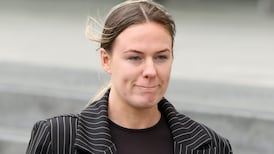A developer seeking to build apartments on the site of a former mother and baby home in Cork city has called on Ordnance Survey Ireland (OSI) to "correct the record" after it was refused planning permission because of concerns that the works might interfere with a children's burial ground.
An Bord Pleanála last May turned down an application from MWB Two Ltd to build 179 apartments across three blocks on the grounds of the former Bessborough home in Blackrock, Cork.
In its decision, the board referred to reports from the Commission of Investigation into Mother and Baby Homes, which was unable to account for the burial places of some 859 infants who died at Bessborough between 1922 and 1998.
The board said it would be “premature” to grant permission before establishing that the site “was not previously used as, and does not contain, a children’s burial ground”.
During an oral hearing on the application last April, there was much focus on a 1950 OSI Trace Map which carried a label “Children’s Burial Ground” in an area of the site around which two of the proposed blocks would be built.
Graveyard for nuns
Expert witness for MWB Two Ltd, retired OSI cartographer Michael Flynn, said he was satisfied the label did not refer to the actual spot marked on the map but to an adjacent smaller area next to a graveyard for nuns.
Lawyers for the company stated in a letter to OSI that Mr Flynn’s contention was supported by evidence from excavations of the land marked with the label where “no human remains of any sort were found”.
However, OSI cartographer John Clarkin, for the campaign group Cork Survivors' and Supporters' Alliance, disagreed and said the label's inclusion on the 1950 map, after not being shown on a 1932 map, was consistent with the need for a burial ground after the opening of a maternity hospital in the 1930s.
Mr Clarkin said it was his view that the label “Children’s Burial Ground” referred to the locus over which it was placed on the trace map.
Lawyers for MWB Two Ltd have written to OSI requesting that it “correct the record”, contending that Mr Clarkin’s interpretation was incorrect and that the resulting media attention had led to it subsequently being accepted as fact.
‘Erroneous conclusion’
“It continues to be widely promulgated in local and national press, political circles [and] social media,” their letter said. “In the circumstances outlined in this letter, OSI, a State body, has promulgated a report and, in formal proceedings before An Bord Pleanála, adduced evidence based on an erroneous conclusion. That report must be reviewed by OSI and corrected.”
OSI said it took very seriously any allegation that evidence provided by it at a statutory hearing fell short of the appropriate standards. It said it had reviewed a transcript of Mr Clarkin’s testimony at the hearing to “ensure the independent expert evidence provided was indeed accurate and correct”.
It said it spent months reviewing its manuscript stores to see if any further documentation or information could be uncovered, but that nothing was found to assist in providing a definitive conclusion.
“Without further records, OSI is not in a position to provide an unequivocal definitive view as to the precise location of the Children’s Burial Ground. In this regard, OSI recognises that the records available in respect of this matter may be capable of being interpreted in more than one way,” it said.
“OSI does not believe that there are any material inaccuracies in the expert evidence given during the oral hearing on its behalf and does not believe that same requires correction.”













